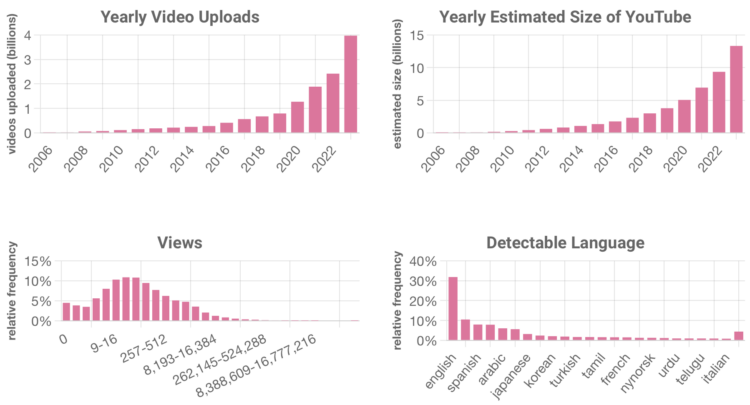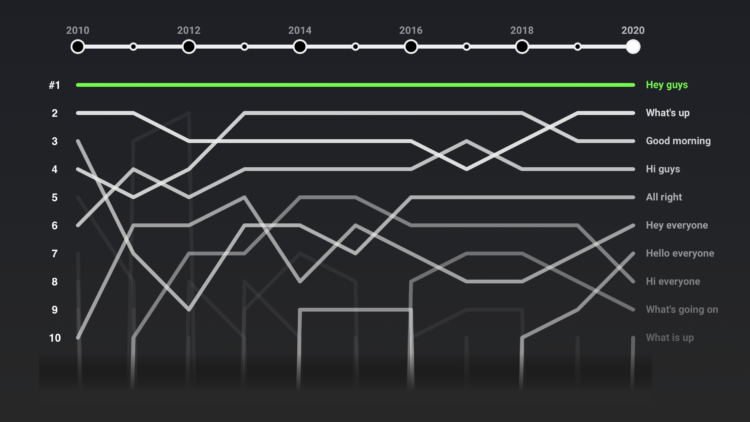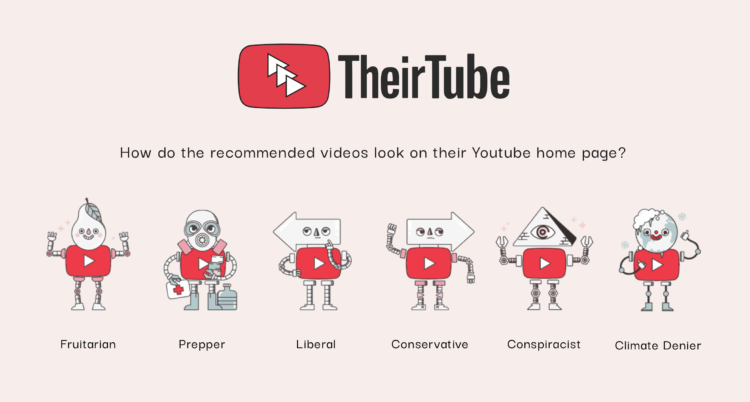YouTube doesn’t offer numbers for how big they are, so Ethan Zuckerman and Jason Baumgartner estimated the size using a method they equate to drunk dialing.
Consider drunk dialing again. Let’s assume you only dial numbers in the 413 area code: 413-000-0000 through 413-999-9999. That’s 10,000,000 possible numbers. If one in 100 phone calls connect, you can estimate that 100,000 people have numbers in the 413 area code. In our case, our drunk dials tried roughly 32k numbers at the same time, and we got a “hit” every 50,000 times or so. Our current estimate for the size of YouTube is 13.325 billion videos – we are now updating this number every few weeks at tubestats.org.
Tags: estimation, Ethan Zuckerman, Jason Baumgartner, YouTube



